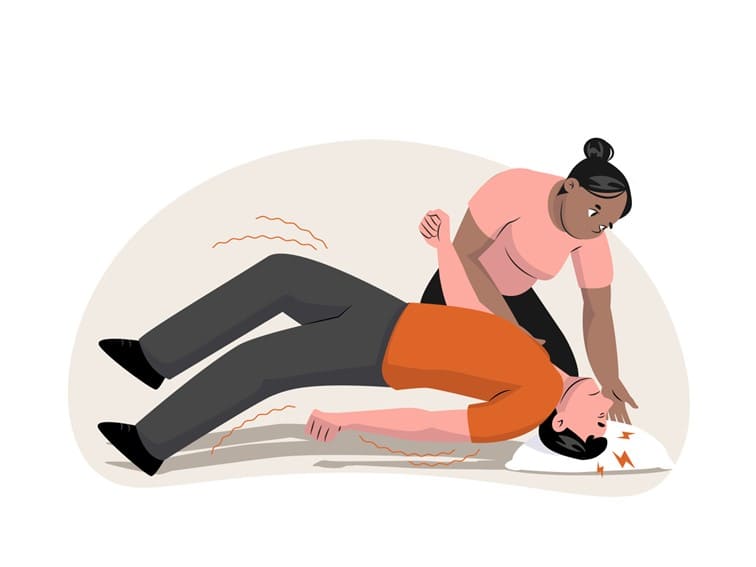First aid for epilepsy: A medical condition (neurological) that causes seizures due to the disturbance in the normal activity of the brain and nervous system is known as epilepsy. When this happens in the brain, senses, thoughts and bodily functions get disturbed. Epilepsy can begin at any age.
Common symptoms of seizures include Loss of awareness, clouded awareness, falls (head injury risk is high), confusion, odd body movements or uncontrolled body movements, jerking, convulsions, muscle contractions, fidgeting, lip smacking, strange sensation in the stomach (rising feeling in the stomach), strong taste or smell sensation in the mouth, anger, sudden fear, loss of consciousness, strange smell, and sleepiness after the seizure. If the seizure is partial then only one side of the brain is involved, whereas generalized seizures affect both sides of the brain.
The objective of First aid for epilepsy is to keep the person safe until seizures stop.
First aid for Epilepsy (Seizures): Do’s
Stay cool
If clothing is tight, then loosen it.
Loosen anything around the neck.
Ensure to protect the person from injury.
Remove potentially damaging objects including furniture, and sharp objects. sharp corners and place them away from the person.
Support the person during a fall to protect him or her from injury.
Stay along with the person until the seizures stop.
Provide support to the head with a soft object nearby or a pillow.
Ensure that the head doesn’t directly hit the floor.
Clean any secretions from the mouth and nose.
Make a note of the time the seizure began and ended.
Remove any objects if present in the patient’s mouth.
If the patient vomits, then turn them to their side to prevent choking.
Note the signs and symptoms, the body movements and the duration of the seizures, and the affected body parts – hands and legs.
Remain calm throughout the episode of the seizure.
When you take the patient to a neurologist inform the doctor about all the symptoms that you have noted.
After the seizure subsides, the patient will be disoriented for a few minutes while the brain rests and recharges. This is normal.
To keep the person safe during a seizure, knowing what not to do is also important.
Do not do the following:
Don’t get disturbed or panic – remain calm.
Don’t try to control the person with force or stop their movements or hold the person down.
Never put anything in the mouth of the person having a seizure as he or she cannot swallow – it may choke their mouth.
When the person feels breathless for a while, don’t try to give mouth-to-mouth breaths. After the seizure stops, breathing automatically becomes normal.
Never put the person under water or splash water to cool off them.
Seek medical help if:
The person never had a seizure before, but having it for the first time.
The person has become unconscious for longer than 5 minutes.
The seizure continued for longer than five to ten minutes or more.
The seizure doesn’t seem to last longer, but the person is unable to recover.
The person is facing difficulty in walking and breathing.
The person has gone to sleep for a long and is not waking up.
The person immediately experienced another seizure (soon after the first one).
The person has a fever and became rigid with stiff hands and legs.
The person becomes weak, lethargic, and vomits.
The person is hurt during the seizure.
The person having a seizure is diabetic or has other associated health conditions like heart disease or high blood pressure.
The seizure occurs in water.
If you notice any combination of the above signs and symptoms, then the person should be taken immediately to the nearest medical facility or to a neurologist for an accurate diagnosis and treatment of seizures.


